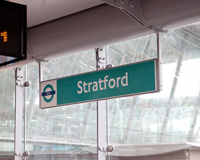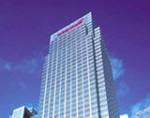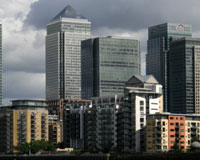 It is no secret that many occupiers are being priced out of central London, where premium West End office space can now be in excess of £120 per sq ft. By Q1 2016 rents for grade-A space in the West End and City are expected to reach £127 per sq ft and £65 per sq ft respectively, with £75 per sq ft and £61 per sq ft likely in Midtown and South Bank.
It is no secret that many occupiers are being priced out of central London, where premium West End office space can now be in excess of £120 per sq ft. By Q1 2016 rents for grade-A space in the West End and City are expected to reach £127 per sq ft and £65 per sq ft respectively, with £75 per sq ft and £61 per sq ft likely in Midtown and South Bank.
The landlord, it is fair to say, holds the whip hand. Low office vacancy levels in central London mean the balance of negotiating power has been ebbing away from tenants for some time and as we move through the cycle the ability for an average-size occupier to secure a rent break at the fifth year is increasingly less likely.
Longer leases are commonplace, while rent-free periods have roughly halved over the past 18 months, with 12 to 15 months on a ten-year term in core areas now the norm. Market observers say that occupiers needing more than 30,000 sq ft are making viewings ever further away from their lease event, with some entering into leases as long as three years before occupation (see prelets feature, p30).
Traditionally migration has focused on areas such as Midtown, the City and northern and eastern City fringes, but the gap between what occupiers are paying now and what they expect to pay in those areas has widened, making it less attractive to move to EC2, EC3, WC1 and WC2. The shortage of choice and ever-increasing costs are forcing occupiers to find value in locations previously thought off-limits, such as E1.
According to data from Carter Jonas, grade-A office rents in the east City fringe have risen the most out of all central London locations – up 21% since the first quarter of 2014. Occupiers are piling in because it is one of the few cheap places left, says Michael Pain, partner and head of Carter Jonas’s tenant advisory team.

“Twelve months ago there were four areas where you could get refurbished, air-conditioned, grade-A office space in central London for £35 per sq ft: east City fringe, such as Aldgate, Tower Hill and Spitalfields; Docklands; Stratford; and West London, such as Hammersmith. Twelve months on these areas have been reduced to two: Stratford and Docklands, and you can only just about find it in Stratford.”
“It’s all about the differential,” says CBRE’s central London tenant advisory group director, Mark Pollitt. “Midtown occupiers are looking to Victoria, where there is a great deal of development and the stock is vastly improving, although much of this is still under construction and it is still two years before we’ll see lots of ready-made space.”
In west London the immediate value is seen in White City and Shepherd’s Bush, areas with good transport links and improving stock. The site of the BBC’s Media Village in White City has a huge amount of space to re-let, around 1.5m sq ft of office space in all (see west London feature, p13). There is little available in decent-value Hammersmith but even there new buildings, such as the 167,000 sq ft 12 Hammersmith Grove (due to complete in Q1 2016), are expected to achieve around £50 per sq ft.

In south London, traditionally peripheral areas have become mainstream. The new US embassy in Nine Elms is expected to act as a catalyst for the “New South Bank” area around Vauxhall, while the proposed Northern Line Tube extension and redevelopment of the historic power station are boosting prospects in Battersea; although development is residential-led at present. Further south, Wimbledon is also on the radar for occupiers seeking lower costs.
In north London, King’s Cross continues to offer opportunities for development, particularly on the north side of the canal, while Camden is proving particularly popular among technology and media occupiers, with rents for premium space up to 30-40% lower than the West End. Major players and luxury brands are moving to the borough, such as Threadneedle Investments’ letting to Condé Nast for more than £50 per sq ft at 128 Albert Street, NW1.
While Old Street and Shoreditch remain £15-£20 per sq ft cheaper than core areas, rents are becoming prohibitive for start-ups. This is leading to a closer look at Dalston and Hackney for value, although many of the more affordable convertible industrial buildings beloved by the creative/tech industries have been snapped up for residential use.
Andy Tyler, head of Cushman & Wakefield’s West End office agency, says only a small amount of occupiers are value driven. “The reality is it is all about the staff – finding, attracting and retaining talent. Costs are important, but the staff costs are 70% of running a business, property costs are probably no more than 10%.”
Tyler concedes, however, that the days of rigidly having a City, West End and Midtown market are long gone. “In reality, it is a single market for the large occupiers and it is unlikely that an occupier will insist on a certain locale due to London’s changing transport infrastructure – from a macro perspective it is not important.”

Thameslink improvements and the new Crossrail network will have a huge impact on London’s office market. Crossrail in particular will revolutionise the central London office market, acting as a rat-run for tenants deterred from moving from core areas for fear of losing staff.
Once the central section is operational in 2018, Crossrail will further enhance Canary Wharf and Stratford. When it is operational in 2019, Woolwich and Greenwich will be more attractive in the east, plus Ealing Broadway and as far as Hayes and Slough to the west. Expect to see ‘emigration’ into peripheral locations such as Croydon, Old Oak Common, Wembley and potentially even Heathrow and Brentford, which at present rates of around £20 per sq ft would slash property costs, if nothing else.
Yet for the time being, landlords are in a good place and there is no reason to be anything other than extremely positive for 2015. The supply pipeline versus the predicted pattern of demand means rents will almost certainly rise for the next two years. There is still a great deal of desire from businesses to move operations to London to attract talent – Coca-Cola, Amazon and Vodafone are just some of them.
But there is a note of caution. Ultimately, rents can be pushed too far and occupiers will move to a different location. Occupiers are being squeezed, but it doesn’t require a long memory to remember that position being reversed.

The occupier experience
World Association of Nuclear Operators
The World Association of Nuclear Operators (WANO) has made the move east. Based in Wigmore Street, W1, it originally wanted to move to Marylebone due to staff commuting requirements. Half a dozen viewings for 8,000 sq ft on one floor put paid to that idea due to soaring rents and, at best, average quality. It was the same story after broadening the search to Victoria, and so it looked at the City, making an offer on a brand-new vacancy at 1 Bartholomew Lane, EC2. But then WANO looked at 25 Canada Square, E14 and, blown away by the quality and views, it paid circa £35 per sq ft compared to circa £55 it would have paid in Victoria, not to mention the £10 per sq ft or so saved in business rates.
“We needed newer, more modern facilities to accommodate our expanding office,” says WANO’s Jade Knowles. “There was no great upheaval and minimal fuss for existing employees.”
Wavex Technology
For IT support firm Wavex technology it was a similar story. The firm moved from 10 Livonia Street in Soho, W1 to 66 Prescot Street, E1, taking 9,332 sq ft on the seventh floor, after initially looking at the City. The move to E1 was something of a bombshell for staff used to commuting to the West End, but the savings of £250,000 a year in rent and rates were the primary consideration.
 Look East
Look East
Docklands has become one of the prime locations for occupiers seeking value. It was the last of central London’s submarkets to register rental growth since the downturn due to greater supply and sluggish demand, meaning there is no issue with finding refurbished, air-conditioned space at £35 per sq ft.
It is important to distinguish second-hand space offered on sub-leases by tenants and space offered directly by landlords. Most office space in Docklands at £35 per sq ft or less is being offered by tenants. Clifford Chance, for example, has been trying to get rid of big chunks of surplus space at 10 Upper Bank Street, E14, as has Citigroup at 25 Canada Square, also E14.
Landlords such as Canary Wharf Group, which has set the benchmark rent of £42.50 per sq ft at 1 Canada Square, E14, however, are more conscious of obtaining high headline rents to protect capital values. The interest in Docklands has been further boosted by rental growth of 6% year-on-year, not seen since 2008. Rental growth of 8-12% in the next 12 months is seen as realistic, something that will appeal to investors.
Some 12-18 months ago, when there was slightly more choice, many occupiers might not have even considered locating to Docklands for fear of losing key staff. But as rents have risen by as much as 14% or more in the City core, not to mention high business rates, occupiers are more willing to countenance moving east.











